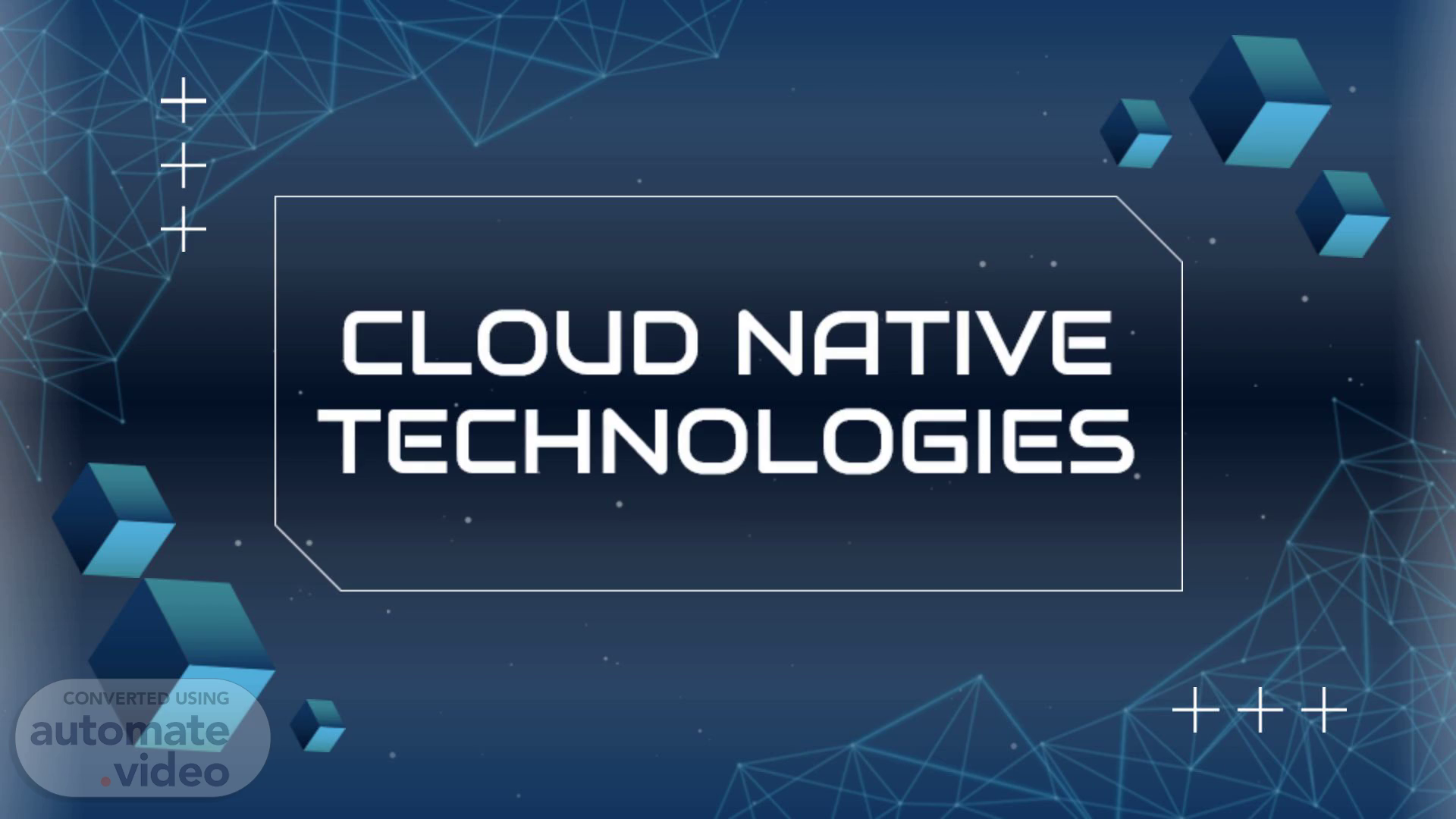
Page 1 (0s)
CLOUD NATIVE TECHNOLOGIES.
Page 2 (7s)
Introduction. In today's digital landscape, businesses are constantly looking for ways to innovate and stay ahead of the curve. Cloud-native technologies offer an exciting opportunity to do just that..
Page 3 (23s)
Purpose statement. what exactly does 'cloud-native' mean?.
Page 4 (41s)
Cloud-native is a term used to describe software applications that are designed and built specifically for deployment in cloud environments..
Page 5 (52s)
Traditional software vs cloud Native. Unlike traditional software, which is typically developed to run on specific hardware or operating systems, cloud-native applications are designed to be highly scalable, resilient, and adaptable to changing conditions..
Page 6 (1m 7s)
Cloud Native Architecture. [image]. A cloud-native architecture is designed to take full advantage of cloud computing capabilities, enabling applications to be built and deployed faster, more efficiently, and with greater scalability than traditional approaches..
Page 7 (1m 21s)
Cloud Native Architecture. At its core are three key components: microservices, containers, and orchestration..
Page 8 (1m 49s)
Applications can be easily scaled up or down to meet changing demands..
Page 9 (2m 12s)
Challenges. One of the biggest challenges is dealing with the complexity of managing distributed systems and microservices. This can lead to issues with scalability and reliability, as well as increased operational overhead. Another challenge is ensuring the security of cloud-native applications. With more components and services involved, there are more potential attack vectors that need to be secured. Additionally, cultural change is often required to fully embrace cloud-native technologies. This may involve breaking down silos between development and operations teams and adopting new processes and tools..
Page 10 (2m 38s)
To overcome these challenges, organizations need to adopt best practices such as establishing clear communication channels, implementing security protocols, and investing in employee training. By doing so, they can fully realize the potential of cloud-native technologies and stay ahead in today's rapidly evolving business environment..
Page 11 (2m 55s)
Conclusions. In conclusion, cloud-native technologies offer a range of benefits that are essential in today's digital landscape. By adopting microservices, containers, and orchestration, organizations can achieve greater scalability, flexibility, and cost-effectiveness. However, it is important to acknowledge the potential challenges of complexity, security, and cultural change that come with adopting these technologies..
Page 12 (3m 14s)
[image]. [image] yea. THANK YOU.